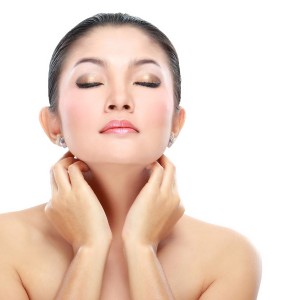Tretinoin, Retin A, Retinoic acid, Retinol an explanation of Retinoids….

With the financial downturn at the top of everyone’s list of concerns, women are looking hard to find beauty solutions that are gentle on the pocket. One of the answers they are turning to is a topical product that promises rejuvenating results for their skin.
The class of products getting attention is those that contain Retinoids (a form of Vitamin A) as the active ingredient. These were originally used in the treatment of acne, but soon their effect on lines and wrinkles were observed. Retinoids are the only class of product which when applied onto the skin (as opposed to injection), has been proven to reduce fine lines and wrinkles in prospective, randomised clinical trials.
Why Skin ages
Why skin ages; skin becomes thinner and over time the skins ability to hold moisture decreases. As we age a thin layer of fat just below the skins surface decreases. At the same time elasticity decreases as collagen and elastin are damaged by time and sunlight. Pigmentation also increases. Facial muscles degenerate and become more contracted, contributing to wrinkles. Some of the major causes of premature skin aging are excessive sun exposure, smoking, poor nutrition and lack of skin care.
How Retinoids work
It is not completely understood how Retinoids work. What is known is that they first need to be converted into the active metabolite, retinoic acid. Retinoic acid alters gene expression in skin cells, rather than inducing cell death. The effect of retinoids is the speeding of skin cell turnover, reducing fine lines and wrinkles as well as breakouts, producing smoother, younger looking skin.
Retinoids also affect melanocytes; the skin cells responsible for skin pigment, these are suppressed by retinoids, thus decreasing skin discoloration and uneven skin tone. (this is why you should always use sunscreen if you are applying retinoids to your skin)
As a result, fine lines and wrinkles are reduced, skin feels smoother and looks more evenly colored.
Retinoids although effective, cannot reverse severe skin damage, wrinkling or advanced sun damage.
Understanding different types of Retinoids
The amount of active retinoic acid available to skin cells, varies between different retinoid preparations.
Essentially they can be divided into prescription form and over-the counter products:
Prescription only retinoids
– Highly potent retinoic acid ie tretinoin/trans-retinoic acid is only available on prescription and strengths available range from 0.025% to 0.1%.
– These are available in various “brands” such as Retin A
Over the counter retinoids
Retinol (also referred to as retinal and retinyl palmitate), is more gentle on the skin. They first need to be converted by special enzymes into the active metabolite, retinoic acid. Only retinoic acid directly affects skin cells and helps reduce some signs of aging. In order to be effective the Retinol needs to be specially formulated so that it is stable when applied to the skin (unlike vitamin A you would take by mouth) in order to see a visible improvement with retinol A you need to apply concentrations of around 0.3% or more, thus many of the over the counter creams contain much lower amounts than would be required to produce a discernable result.
Vitamin A derived products must not be used by pregnant or breast feeding mothers.

